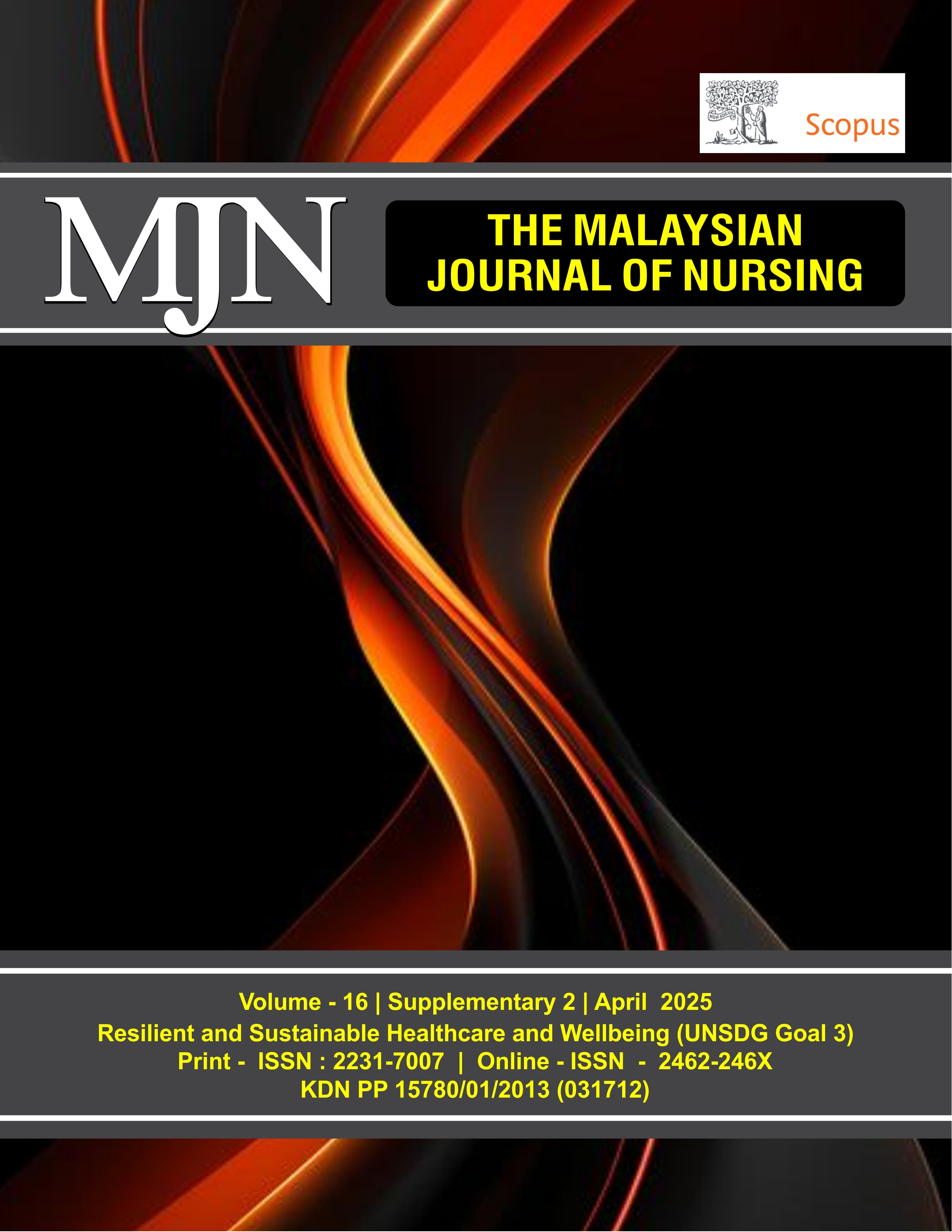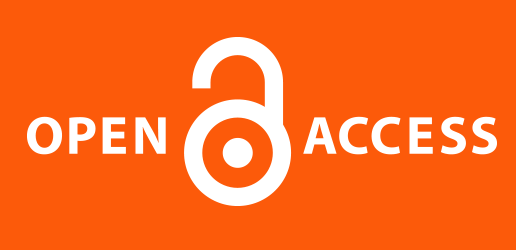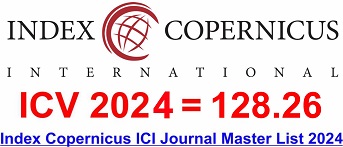Mobile Applications and Community Disaster Preparedness: Insights from a Scoping Review
DOI:
https://doi.org/10.31674/mjn.2025.v16isupp2.017Abstract
Background: Mobile applications have emerged as innovative solutions for enhancing community resilience during emergencies. However, their widespread adoption faces challenges, including usability limitations, accessibility barriers, and integration issues within existing disaster management systems. Objective: This scoping review systematically investigated the role of mobile applications in strengthening community disaster preparedness. Methods: The study employed the Arksey and O’Malley framework for scoping reviews. A comprehensive literature search was conducted across multiple databases, including PubMed, Google Scholar, Scopus, and Web of Science, covering publications from 2012 to 2024. Eligible studies included peer-reviewed articles focusing on mobile applications designed for disaster preparedness, excluding non-peer-reviewed sources and those lacking a community focus. Data extraction utilised a standardised form, and quality assessment was performed using the Mixed Methods Appraisal Tool (MMAT). Results: The review included 16 studies from an initial pool of 256 records. The findings highlighted that mobile applications often feature real-time notifications, educational modules, and tools for emergency coordination. Applications targeting specific demographics, such as older adults, demonstrated improved readiness outcomes but underscored the importance of addressing diverse user needs. Conclusion: Mobile applications are pivotal in enhancing community disaster preparedness and resilience, offering a range of functionalities that can significantly contribute to readiness. Future research should focus on validating these applications in real-world settings and examining their effects on both individual and community-level preparedness outcomes.
Keywords:
Disaster Preparedness, Mobile Applications, Scoping Review, UsabilityDownloads
References
Ahmed, M. M., Oweidat, M., Okesanya, O. J., Alaswad, M., Abdelbar, S. M. M., Gill, P., & Alsabri, M. (2025). Barriers to Pediatric emergency care in low-resource settings: A narrative review. Sage Open Pediatrics, 12, https://doi.org/10.1177/30502225251336861 .
Aiello, L., Argiento, R., Finazzi, F., & Paci, L. (2023). Survival modelling of smartphone trigger data for earthquake parameter estimation in early warning: With applications to 2023 Turkish-Syrian and 2019 Ridgecrest events. arXiv. https://doi.org/10.48550/arXiv.2303.00806
Arksey, H., & O’malley, L. (2005). Scoping studies: towards a methodological framework. International Journal of Social Research Methodology, 8(1), 19–32. https://doi.org/10.1080/1364557032000119616
Bachmann, D. J., Jamison, N. K., Martin, A., Delgado, J., & Kman, N. E. (2015). Emergency preparedness and disaster response: there’s an app for that. Prehospital and Disaster Medicine, 30(5), 486–490. https://doi/10.1017/S1049023X15005099
Bandi, A., Fellah, A., Bondalapati, H., & Corson, M. (2018). Mobile usability testing: Gathering evidence for designing user interfaces for emergency disaster management systems. Proceedings of ISCA 28th International Conference on Software Engineering and Data Engineering, 38. Retrieved from: https://www.nwmissouri.edu/csis/pdf/vitae/bandi/Mobile%20Usability%20Testing%20Gathering%20Evidence%20for%20Designing%20User.pdf. Accessed on 15th July, 2024
Bania, A., Iatrellis, O., & Samaras, N. (2023). Information Communication Technologies (ICTs) and Disaster Risk Management (DRM): Systematic Literature Review. In Proceedings of the International Conference on Information and Communication Technologies for Sustainability (ICT4S) (pp. 1779–1794). Springer. https://doi.org/10.1007/978-3-031-23721-8_137
Chandran, I., & Vipin, K. (2024). Multi-UAV networks for disaster monitoring: challenges and opportunities from a network perspective. Drone Systems and Applications, 12, 1–28. https://doi.org/10.1139/dsa-2023-0079
Cicek, D., & Kantarci, B. (2023). Use of mobile crowdsensing in disaster management: A systematic review, challenges, and open issues. Sensors, 23(3), 1699. https://doi.org/10.3390/s23031699
Estuar, M. R. J., De Leon, M., Santos, M. D., Ilagan, J. O., & May, B. A. (2014). Validating UI through UX in the context of a mobile-web crowdsourcing disaster management application. 2014 International Conference on IT Convergence and Security (ICITCS), 1–4. https://doi.org/10.1109/ICITCS.2014.7021823
Ezeonu, N. A., Hertelendy, A. J., Adu, M. K., Kung, J. Y., Itanyi, I. U., Dias, R. da L., Agyapong, B., Hertelendy, P., Ohanyido, F., & Agyapong, V. I. O. (2024). Mobile apps to support mental health response in natural disasters: Scoping review. Journal of Medical Internet Research, 26. https://doi.org/10.2196/49929
Fazeli, S., Haghani, M., Mojtahedi, M., & Rashidi, T. H. (2024). The role of individual preparedness and behavioural training in natural hazards: A scoping review. International Journal of Disaster Risk Reduction, 105. https://doi.org/10.1016/j.ijdrr.2024.104379
Grinko, M., Kaufhold, M.-A., & Reuter, C. (2019). Adoption, use and diffusion of crisis apps in Germany: A representative survey. In Proceedings of Mensch und Computer 2019 (pp. 263–274). Association for Computing Machinery. https://doi.org/10.1145/3340764.3340782
Ida, R., Widiyantoro, S., Gunawan, E., Sunarti, E., Marliyani, G. I., & Saud, M. (2022). The use of digital media and modes of communication of affected people: A case study of earthquakes in East Java, Indonesia. Journal of Disaster Research, 17(6), 1037–1047. https://doi.org/10.20965/jdr.2022.p1037
Johnson, P. M., Baroud, H., Brady, C. E., & Abkowitz, M. (2023). Who contributes to disaster preparedness? Predicting decision making in social dilemmas pertaining to community resilience. Risk Analysis, 43(12), 2659–2670. https://doi.org/10.1111/risa.14116
Kangana, N., Kankanamge, N., De Silva, C., Goonetilleke, A., Mahamood, R., & Ranasinghe, D. (2024). Bridging community engagement and technological innovation for creating smart and resilient cities: A systematic literature review. Smart Cities, 7(6), 3823–3852. https://doi.org/10.3390/smartcities7060147
Karl, I., Rother, K., & Nestler, S. (2015). Crisis-related apps: Assistance for critical and emergency situations. International Journal of Information Systems for Crisis Response and Management (IJISCRAM), 7(2), 19–35. https://doi.org/10.4018/IJISCRAM.2015040102
Kolathayar, S., Kumar, V. K., Rohith, V. R., Priyatham, K., Nikil, S., & Anupa, S. A. (2019). Development of mobile application to assess and enhance earthquake preparedness level of individuals and community in India. In B. Fatahi (Ed.), Sustainable design and construction for geomaterials and geostructures (pp. 197–216). Springer. https://doi.org/10.1007/978-3-319-95753-1_16
Kuula, J., Kettunen, P., Auvinen, V., Viitanen, S., Kauppinen, O., & Korhonen, T. (2013). Smartphones as an alerting, command and control system for the preparedness groups and civilians: Results of preliminary tests with the finnish police. ISCRAM, 42–51. Retrieved from: https://idl.iscram.org/files/kuula/2013/666_Kuula_etal2013.pdf. Accessed on 15th July, 2024
Kwee-Meier, S. T., Wiessmann, M., & Mertens, A. (2017). Integrated information visualization and usability of user interfaces for safety-critical contexts. International Conference on Engineering Psychology and Cognitive Ergonomics, 71–85. https://doi.org/10.1007/978-3-319-58475-1_6
Levac, D., Colquhoun, H., & O’Brien, K. K. (2010). Scoping studies: Advancing the methodology. Implementation Science, 5, 69. https://doi.org/10.1186/1748-5908-5-69
Mehmood, A., Barnett, D. J., Kang, B.-A., Chhipa, U.-A., Asad, N., Afzal, B., & Razzak, J. A. (2023). Enhancing a willingness to respond to disasters and public health emergencies among health care workers, using mHealth intervention: A multidisciplinary approach. Disaster Medicine and Public Health Preparedness, 17. https://doi.org/10.1017/dmp.2023.129
Meyer, M. A., Yu, S., Semien, J., Van Zandt, S., & Burke, S. (2025). Planning for disaster recovery: planner perspectives and experiences. Journal of the American Planning Association, 91(2), 239–255. https://doi.org/10.1080/01944363.2024.2367031
Navarro de Corcuera, L., Barbero-Barrera, M. D. M., Campos Hidalgo, A., & Recio Martínez, J. (2022). Assessment of the adequacy of mobile applications for disaster reduction. Environment, Development and Sustainability, 1–27. https://doi.org/10.1007/s10668-021-01697-2
Nilsson, E. G., & Stølen, K. (2011). Generic functionality in user interfaces for emergency response. Proceedings of the 23rd Australian Computer-Human Interaction Conference, 233–242. https://doi.org/10.1145/2071536.2071574
Nourozi, K., Saeli, E., Khankeh, H., Kavari, S. H., Rezasoltani, P., & Fathi, B. (2016). The effect of risk reduction intervention on earthquake disaster preparedness of the elderly people. Health in Emergencies & Disasters Quarterly, 1(2), 89-96. Retrieved from: http://hdq.uswr.ac.ir/article-1-68-fa.html.Accessed on 18th July, 2024.
Nurse, J. R. C., Creese, S., Goldsmith, M., Craddock, R., & Jones, G. (2012). An initial usability evaluation of the secure situation awareness system. Retrieved from: https://kar.kent.ac.uk/67531/. Accessed on 24th July, 2024
Pandey, N., Rani, P., & Kundu, S. (2025). An intelligent disaster management system: integrating technology for effective response and recovery. 2025 3rd International Conference on Intelligent Systems, Advanced Computing and Communication (ISACC), 1107–1112. https://doi.org/10.1109/ISACC65211.2025.10969224.
Paul, J. D., Bee, E., & Budimir, M. (2021). Mobile phone technologies for disaster risk reduction. Climate Risk Management, 32. https://doi.org/10.1016/j.crm.2021.100296
Prasad, A., Gasco-Hernandez, M., Gil-Garcia, J. R., & Yuan, Q. (2023). Human-centric design in applications for emergency preparedness and response in rural communities: The case of the e!app. Proceedings of the 24th Annual International Conference on Digital Government Research, 380–387. https://doi.org/10.1145/3598469.3598512
Rivas, L. Y. C., Domínguez, E. L., Velázquez, Y. H., Isidro, S. D., Nieto, M. A. M., & De La Calleja, J. (2024). Intelligent mobile distributed management systems for emergencies such as earthquakes or fires: A systematic literature review. In J. Mejía, M. Muñoz, A. Rocha, Y. Hernández Pérez, & H. Avila-George (Eds.), New perspectives in software engineering (Vol. 1135). Springer. https://doi.org/10.1007/978-3-031-50590-4_21
Sarshar, P., Nunavath, V., & Radianti, J. (2015). On the usability of smartphone apps in emergencies: An HCI analysis of GDACSmobile and SmartRescue apps. Human-Computer Interaction: Interaction Technologies: 17th International Conference, HCI International 2015, Los Angeles, CA, USA, August 2-7, 2015, Proceedings, Part II 17, 765–774. https://doi.org/10.1007/978-3-319-20916-6_70
Shafapourtehrany, M., Batur, M., Shabani, F., Pradhan, B., Kalantar, B., & Özener, H. (2023). A comprehensive review of geospatial technology applications in earthquake preparedness, emergency management, and damage assessment. Remote Sensing, 15(7). https://doi.org/10.3390/rs15071939
Shukla, M., Amberson, T., Heagele, T., McNeill, C., Adams, L., Ndayishimiye, K., & Castner, J. (2024). Tailoring household disaster preparedness interventions to reduce health disparities: Nursing implications from machine learning importance features from the 2018–2020 FEMA national household survey. International Journal of Environmental Research and Public Health, 21(5). https://doi.org/10.3390/ijerph21050521
Sukhwani, V., & Shaw, R. (2020). Operationalizing crowdsourcing through mobile applications for disaster management in India. Progress in Disaster Science, 5. https://doi.org/10.1016/j.pdisas.2019.100052
Susmini, S., Feri, J., Wijaya, S., Wibowo, W. D. A., Arifin, H., & Lee, B.-O. (2023). The effects of a disaster preparedness app on community knowledge and intentional behavior in hurricane risk areas. Disaster Medicine and Public Health Preparedness, 17. https://doi.org/10.1017/dmp.2022.46
Syukron, M., Madugalla, A., Shahin, M., & Grundy, J. (2024). A comprehensive study of disaster support mobile apps. ArXiv Preprint, Cornell University. https://doi.org/10.48550/arXiv.2407.08145
Tan, M. L. (2020). Usability of disaster apps: understanding the perspectives of the public as end-users: A dissertation presented in partial fulfilment of the requirements for the degree of Doctor of Philosophy in Emergency Management at Massey University, Wellington, New . Massey University. Retrieved from: http://hdl.handle.net/10179/15393. Accessed on 18th July, 2024
Tricco, A. C., Lillie, E., Zarin, W., O’Brien, K. K., Colquhoun, H., Levac, D., Moher, D., Peters, M. D. J., Horsley, T., & Weeks, L. (2018). PRISMA extension for scoping reviews (PRISMA-ScR): checklist and explanation. Annals of Internal Medicine, 169(7), 467–473. https://doi.org/10.7326/M18-0850
Wang, Y., Li, J., Zhao, X., Feng, G., & Luo, X. (2020). Using mobile phone data for emergency management: a systematic literature review. Information Systems Frontiers, 22, 1539–1559. https://doi.org/10.1007/s10796-020-10057-w
Xu, W., An, X., Li, E., Wang, C., & Zhao, L. (2020). Earthquake early warning system in Liaoning, China based on PRESTo. Earthquake Science, 33(5–6), 281–292. https://doi.org/10.29382/eqs-2020-0281-01
Yuwono, A., Chrysler, A., Puteri, T., Warnars, H. L. H. S., Adnandi, M. A., & Maulana, I. (2019). Mobile application development to mitigate the risk of earthquake. 2019 IEEE International Conference on Engineering, Technology and Education (TALE), 1–5. https://doi.org/10.1109/TALE48000.2019.9225888
Published
How to Cite
Issue
Section
License
Copyright (c) 2025 The Malaysian Journal of Nursing (MJN)

This work is licensed under a Creative Commons Attribution-NonCommercial-NoDerivatives 4.0 International License.



































